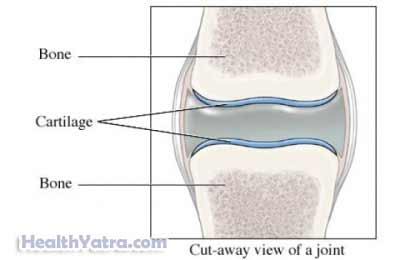Definition
Chondrosarcoma is a type of cancer. It grows in cartilage cells in the body. Cartilage is the connective tissue. Most bones are created from cartilage. It is found in many areas of the body.
This cancer is typically found in the cartilage cells of the femur, arm, pelvis, knee, and spine. Rarely, the ribs and other areas may also be affected.
The condition is uncommon. It is the second most common type of bone cancer. It most often strikes between the ages of 50-70. Chondrosarcoma rarely strikes individuals younger than 20.
Cancer occurs when cells in the body divide without control or order. If cells keep dividing uncontrollably, a mass of tissue forms. This is called a growth or tumor. The term cancer refers to malignant tumors. They can invade nearby tissue and spread to other parts of the body.
As with all cancers, the prognosis or outcome depends upon how large the tumor is and whether it has spread to distant structures.

Causes
The cause of this cancer is not fully known. Some cases may be due to genetic factor.
Risk Factors
Certain factors seem to be common among individuals who develop chondrosarcoma, these include:
- Enchondroma—a benign bone tumor often found in the hands
- Osteochondroma —excess cartilage or bone found at the end of a growth plate
- Multiple osteochondromas (bone tumors)
- Ollier’s disease, which causes a group of enchondromas
- Maffucci’s syndrome, which causes a combination of multiple endochondromas and various tumors
Symptoms
Symptoms will vary from person to person. The location and severity of the tumor will affect them. The most common symptoms of chondrosarcoma include:
- Large lump or mass on a bone
- Pressure surrounding the mass
- Pain that worsens at night
- Pain that responds to anti-inflammatory pain relievers
- Pain that does not improve with rest
- Pain that gradually worsens over time and may last for years
Diagnosis
Your doctor will ask about your symptoms and medical history. A physical exam will be done.
Tests may include the following:
- Biopsy —removal of a sample of tissue to check for a tumor (to diagnose a malignancy)
- X-ray —a test that uses radiation to take images of tissues, bones, and cartilage
- CT scan —a type of x-ray that uses a computer to make pictures of internal organs, bones, and cartilage
- MRI scan —a test that uses magnetic waves to make pictures of internal organs, bones, and cartilage
- PET/CT scan —a test to evaluate the metabolic activity of tissues
- Blood tests—to determine abnormalities in the blood
Treatment
Treatment can vary based on your age, overall health, and stage of the disease. Talk with your doctor about the best plan for you. Treatment options include:
Surgery
This may be used to remove the tumor.
Radiation Therapy
High energy x-rays are used to target and kill cancer cells.
Chemotherapy
Drugs that kill tumor cells may be used. Chemotherapy is considered investigational in the management of chondrosarcomas.
Physical Therapy
Physical therapy may be used to help the affected area heal following surgery.
Prevention
The cause of chondrosarcoma is not fully understood. There are no known preventive steps for this condition.
